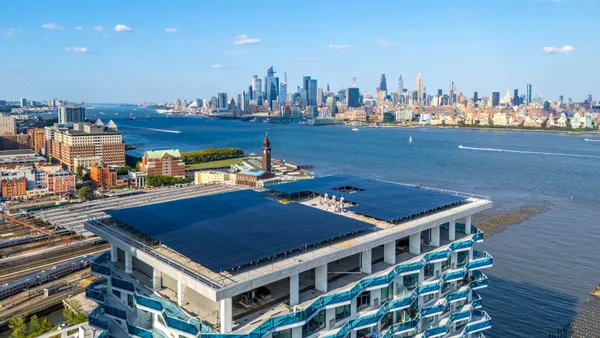The Energy Trust of Oregon has awarded a five-year contract to energy sustainability services provider CLEAResult to deliver energy efficiency services for its New Buildings program.
Since 2009, CLEAResult has implemented the New Buildings program, which offers design teams, contractors, developers and building owners support to construct energy-efficient structures that align with Oregon’s evolving energy needs. Energy Trust and CLEAResult seek to optimize building performance and reliability by incorporating whole building energy modeling and efficient design principles from the initial stages of design, according to the news release.
The latest phase of this program introduces three initiatives — Whole Buildings for All, Market Capacity Development and a Pathway to Grid Interactivity — to guide the design of energy-efficient renovations and new construction projects, according to the release.
“As part of this next step, our teams will deliver on promises of the Architecture 2030 Challenge and ensure every building is designed with efficiency at its core,” Kecia Davison, senior vice president at CLEAResult, said in a statement.
The Architecture 2030 challenge, issued in 2006, calls on the building community to achieve ambitious emissions reduction targets. These requirements specify that major renovations and new buildings must be designed to meet a fossil fuel, greenhouse gas-emitting energy consumption performance standard of 70% below the regional or national average/median for that building type, according to an outline of the initiative. An equal volume of existing building area must also be renovated annually to meet that standard, per the challenge requirements. The challenge also raises the fossil fuel reduction standard for all new builds and major renovations to 90% in 2025, with a goal of reaching carbon neutrality in 2030.
Incentives the Energy Trust of Oregon offers for new construction and major renovations include up to $6,500 in early design assistance to help developers, owners and operators establish design goals and set targets to boost energy savings; and up to 60% of the cost of energy modeling and technical studies to offset the costs of professional expertise needed to achieve energy savings, according to the organization’s website. The program also provides up to $2,500 to determine the solar potential of a building, up to $5,000 for battery storage feasibility studies and up to $15,000 to meet solar-ready standards, up to $15,000 to install a solar electric system and up to $15,000 to provide power backup for lighting or other critical items during outages, Energy Trust of Oregon says.
In addition, the program covers up to 50% of the cost of the installation of energy metering costs, up to a $20,000 total.
The Grid Interactive Efficient Buildings approach focuses on integrating energy-efficient technologies, renewable energy sources and smart systems to manage energy use more effectively, the organizations said. They noted that this “design philosophy” enables buildings to function as supplementary energy storage systems, boosting energy reliability and resilience across the grid.
Energy Trust and CLEAResult said they plan to focus on building market capacity by offering fellowships and internships in collaboration with local organizations.














